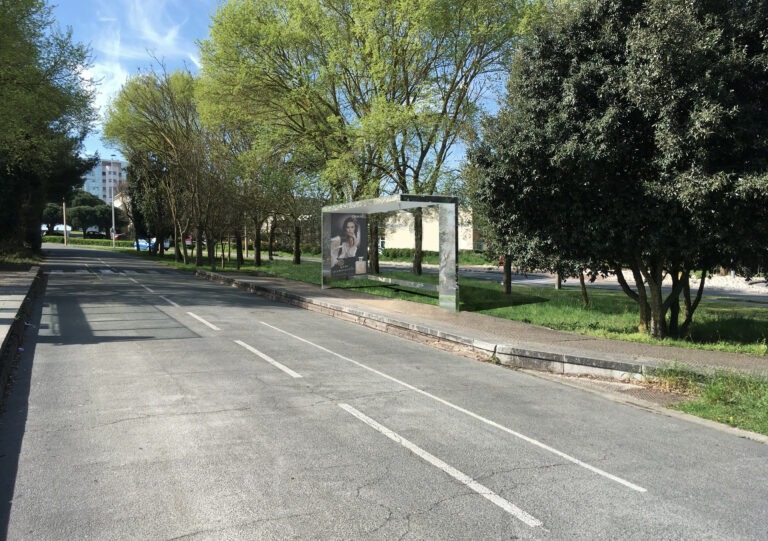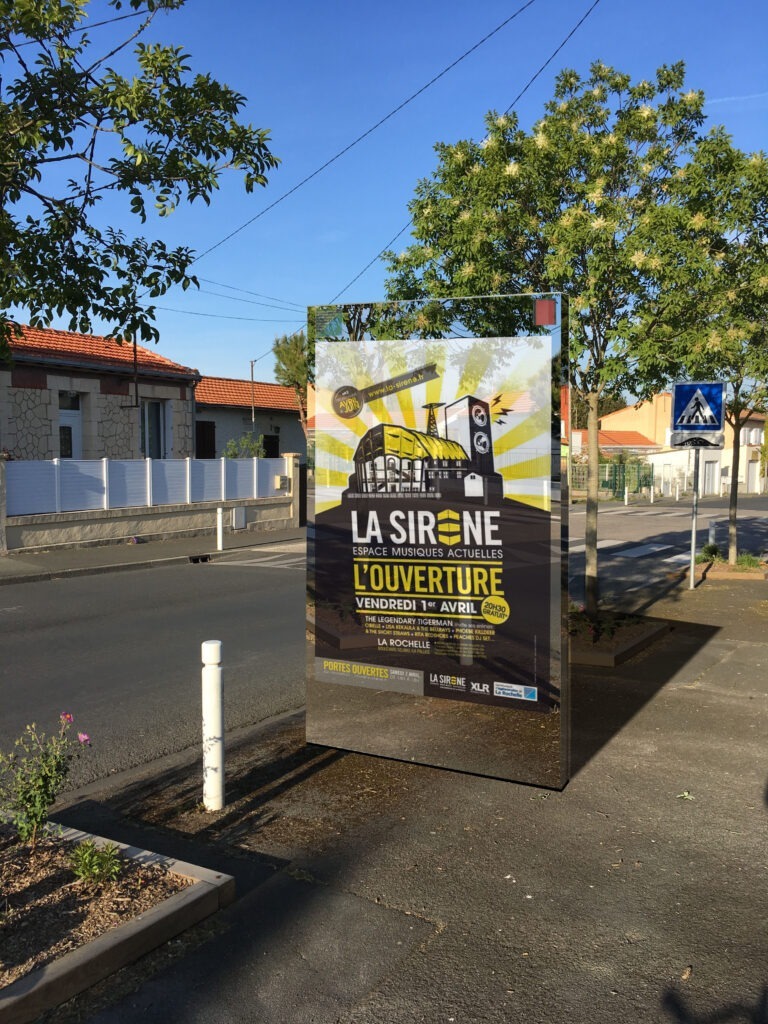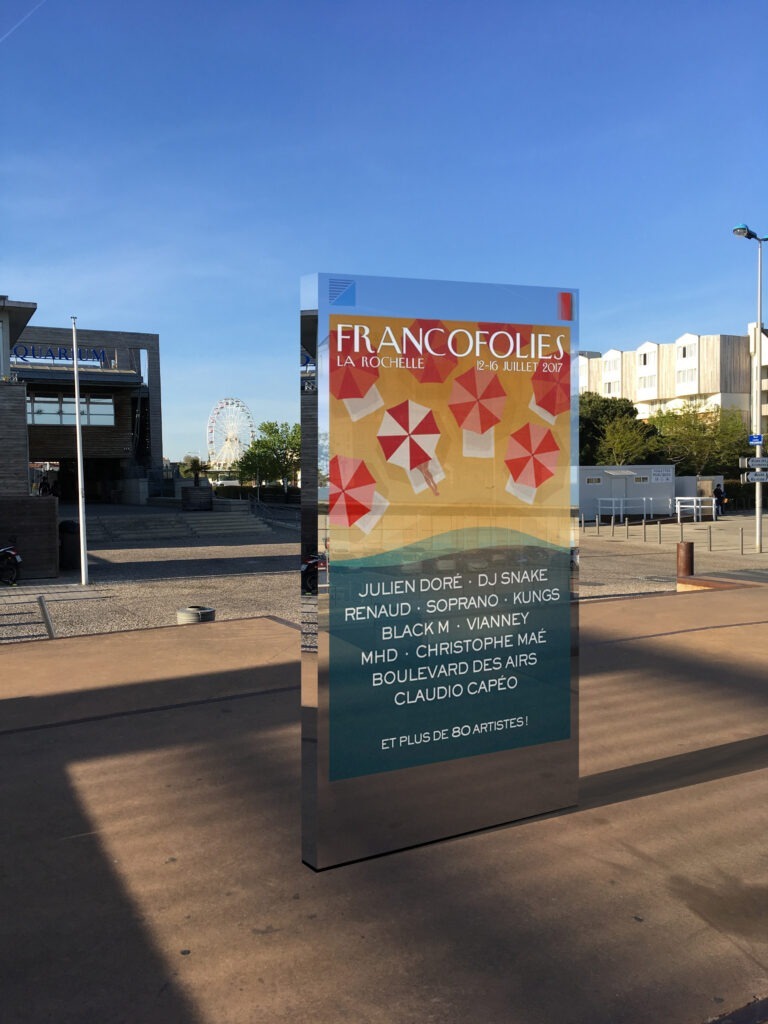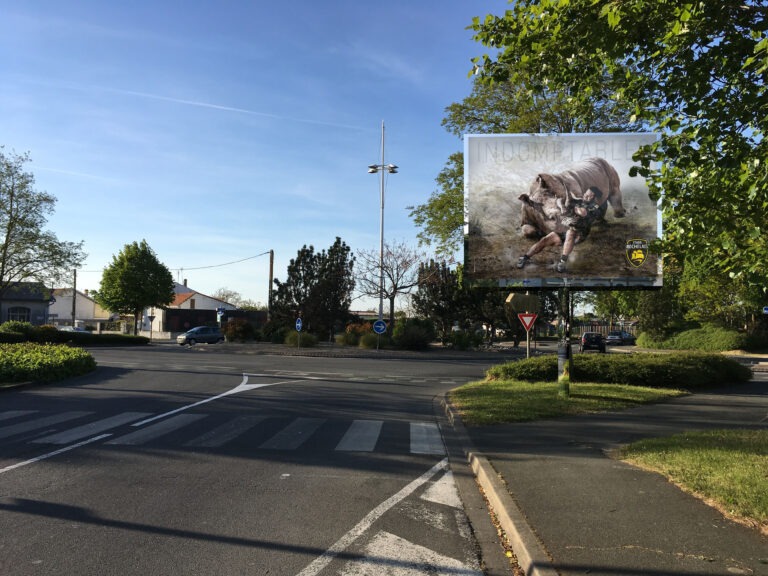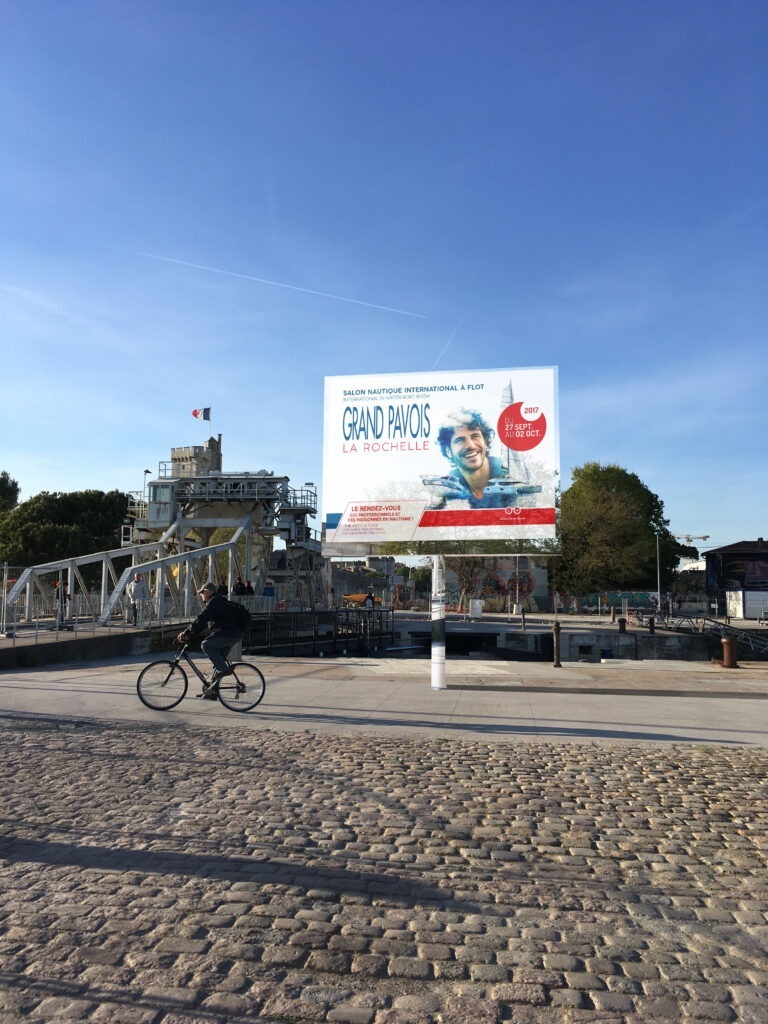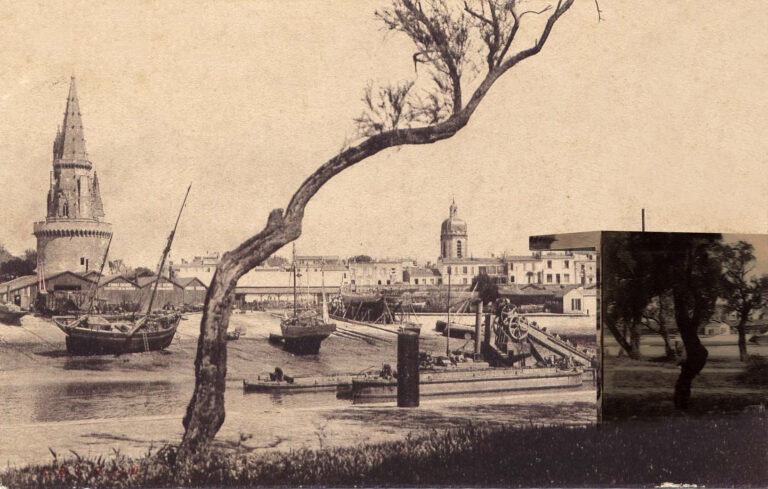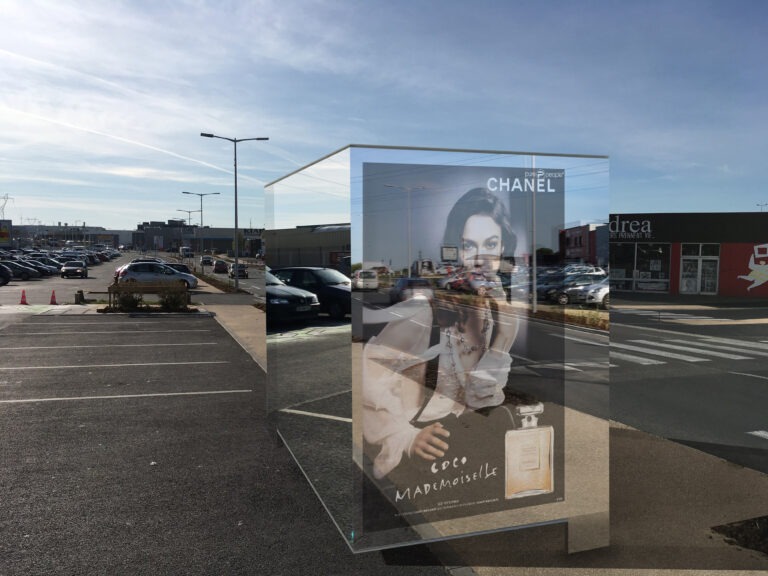Miroir public
+- Programme Conception de mobilier urbain publicitaire (250 pièces : abribus, panneaux 4x3, panneaux sucette)
- Lieu La Rochelle 17000, France
- Maîtrise d'ouvrage Vediaud
- Maîtrise d'oeuvre FMAU
- Dates 2017
- Coût 1 500 000 € HT
- Mission Esquisse
- Responsable projet Frédéric Martinet
- Équipe projet Arnaud Malthieu
Miroir mon beau miroir.
Le marché mondial du mobilier urbain est principalement partagé entre 4 acteurs majeurs qui se livrent une guerre ouverte sur tous les appels d’offres. En effet, les collectivités délèguent la conception, réalisation, implantation et maintenance des abri de bus, et autres panneaux publicitaires. L’entreprise retenue est souvent celle proposant une redevance maximale. Les fabricants déclinent donc une série de gamme, que l’on retrouve de New York à Tokyo, rendant le paysage urbain familier à travers le monde.
La singularité de la commande consiste ici à développer une nouvelle gamme spécifique à l’agglomération de La Rochelle. Le maître d’ouvrage, qui fait partie des 4 acteurs mondiaux, étant originaire du département, souhaitait proposer ce projet comme point de départ d’une nouvelle collection.
Le projet privilégie une démarche architecturale et urbaine, inscrite dans le temps long. Là où les modèles sur catalogues tentent la plupart du temps de se fondre dans le paysage urbain, le choix est ici l’inverse. Assumer la présence d’un objet visible identifié, et territorialisé. Le projet propose des objets épurés et forts, qui jouent avec les différents contextes : résidentiel diffus, patrimonial dense, tertiaire, commercial ou historique. A un design qui se veut « invisible », nous offrons un miroir sur la ville.
Acier inoxydable poli, verre, résine composite. Ces matériaux présentent l’avantage de générer un reflet sur le paysage urbain. Le fantasme publicitaire est alors fusionné avec la réalité. La résine composite, issue des coques de bateau recyclés sert pour mouler les toitures et les assises des abri de bus. Les façades de l’abribus, transparente sur une face, et réfléchissante sur l’autre, permettent aux enfants de jouer, aux adultes de se réajuster. L’abribus devient un vrai lieu dans la ville. Le fonds iconographique des archives de la ville et du musée maritime est valorisé via une sérigraphie sur les panneaux vitrés. L’abribus devient également une sorte de musée de la ville à ciel ouvert, où un usager peut voir simultanément le quartier dans lequel il se trouve à deux époques différentes.
Le design épuré, dégagé de tout élément parasitaire, utilise les travaux de recherche autour du neuromarketing. Devant un support épuré au maximum, le message informationnel gagne en lisibilité. Le projet apporte également une option de géolocalisation, qui permet de détecter en temps réel l’emplacement du bus. Cette technique, largement inspiré des VTC, est aujourd’hui proposée pour les bus.
- Programme Design of public advertising street furniture (250 pieces: bus shelters, 4x3 billboards, scrolling panels)
- Location La Rochelle 17000, France
- Client Vediaud
- Team FMAU
- Cost 1 500 000 € excl. Taxes
- Mission Preliminary Design
- Project manager Frédéric Martinet
- Project team Arnaud Malthieu
Mirror, Mirror, on the wall.
The global market for urban furniture is mainly dominated by four major players engaged in open competition for all tenders. Municipalities delegate the design, construction, installation, and maintenance of bus shelters and other advertising panels. The selected company is often the one offering the highest fee. Manufacturers therefore produce a range of models that can be found from New York to Tokyo, making the urban landscape familiar worldwide.
The uniqueness of this project lies in developing a new range specific to the La Rochelle metropolitan area. The client, one of the four global players, is originally from the region and wanted to present this project as the starting point for a new collection.
The project prioritizes an architectural and urban approach, rooted in the long term. While catalog models often try to blend into the urban landscape, the choice here is the opposite. Embrace the presence of a visible and territorialized object. The project proposes sleek and strong objects that interact with different contexts: scattered residential, dense heritage, tertiary, commercial, or historical. Instead of a design that aims to be « invisible, » we offer a mirror on the city.
Polished stainless steel, glass, composite resin. These materials have the advantage of creating a reflection on the urban landscape. The advertising fantasy is then fused with reality. The composite resin, derived from recycled boat hulls, is used to mold the roofs and seats of the bus shelters. The bus shelter facades, transparent on one side and reflective on the other, allow children to play and adults to readjust. The bus shelter becomes a real place in the city. The iconographic content from the city and maritime museum archives is showcased through screen printing on the glass panels. The bus shelter also becomes a sort of open-air city museum, where a user can simultaneously see the neighborhood they are in at two different times.
The streamlined design, free of any parasitic elements, utilizes research in neuromarketing. In front of a maximally streamlined support, the informational message gains readability. The project also provides a geolocation option, allowing real-time detection of the bus’s location. This technique, widely inspired by ride-sharing services, is now being proposed for buses.

